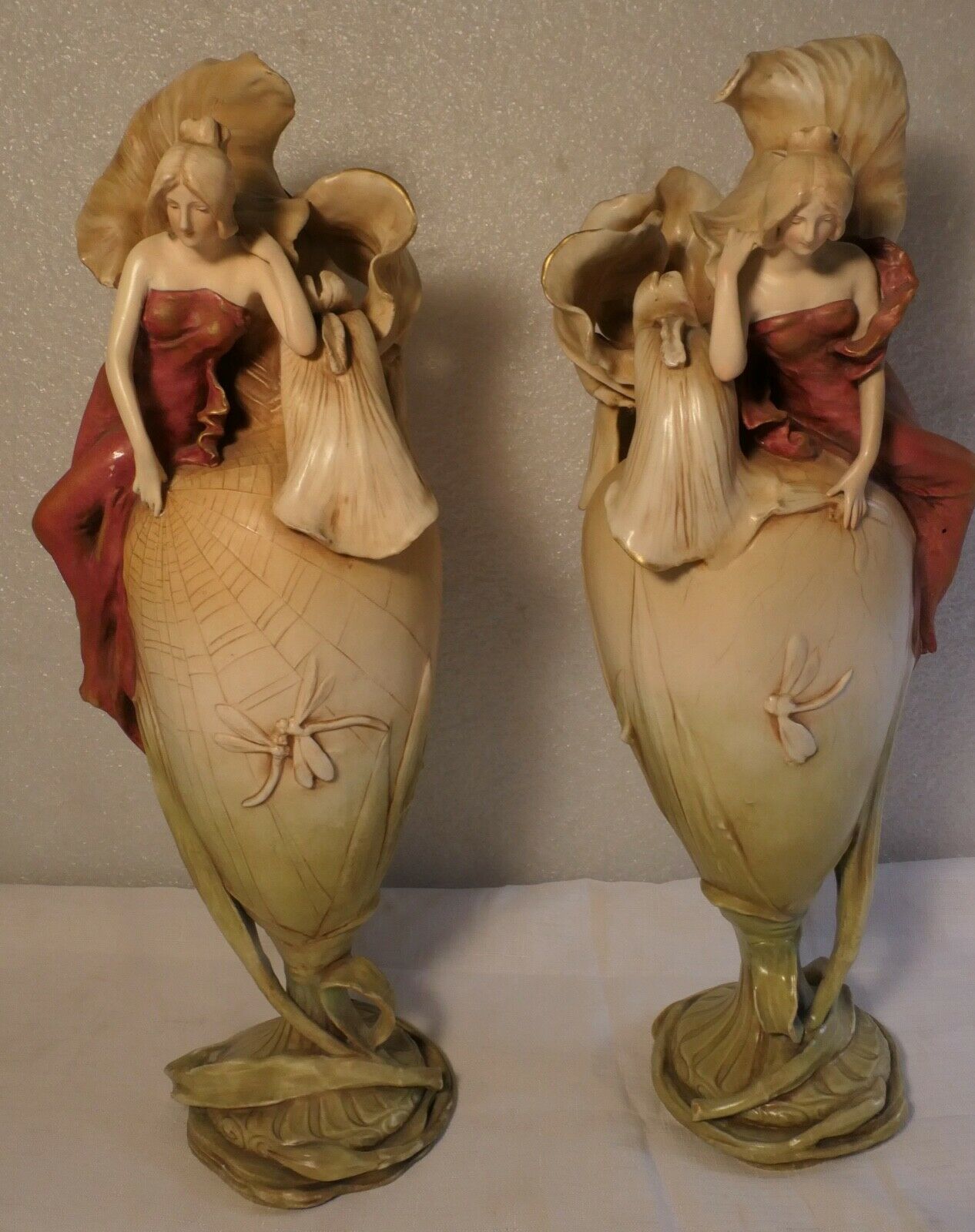-40%
PAIR AUSTRIAN AMPHORA TEPLITZ ART NOUVEAU FANTASY FLORAL MAIDENS SIGNED VASES
$ 2798.4
- Description
- Size Guide
Description
AmphoraIn 1892, after 17 years as a leader in ceramics production, Alfred Stellmacher encouraged his son and sons-in-law to establish a porcelain manufactory. Named after its owners Riessner, Stellmacher and Kessel (RSt&K), and employing son-in-law Paul Dachsel, the firm consistently marked pieces with the word Amphora by the late 1890s and became subsequently known by that name.
The Amphora factory was located in Turn-Teplitz, Austria (now in the Czech Republic). Teplitz, once a spa town that attracted the likes of Goethe and Beethoven, had lost its luster over time because of the increasing intrusion of industrial activity. Turn, which had served Teplitz’s spa-goers with diversions including lush gardens and beautiful villas, was also affected by gradual industrialization. By the mid-19th century, the area formed a de facto ceramics production center that was also home to Kunstkeramik Paul Dachsel, Eduard Stellmacher, and Ernst Wahliss. Porcelain manufactories found the region advantageous because local riverbeds provided an abundant supply of kaolin, an essential ingredient of porcelain.The rivers themselves were sources of energy, and the nearby railroads made it easier to quickly sell and export ceramics across Europe.
When originally incorporated, Amphora imitated the Orientalist and Neo-Baroque styles favored by Alfred Stellmacher. The combined talents of skilled designers like Eduard Stellmacher, Paul Dachsel, and a host of decorators from the Special Ceramics School of Teplitz allowed the Amphora manufacture to quickly develop a unique genre of Art Nouveau ceramics. What unified its output was an unparalleled concern for fine and high-quality design, as well as Alfred Stellmacher’s use of “ivory porcelain,” a matte yellowish material that was malleable, yet resistant to high temperatures. Amphora’s stylistic diversity, combined with its unwavering standard of quality, made it a world leader among industrial manufacturers of art pottery.
An important series from one remarkable decade—1894 to 1904—feature plants (including applied flowers and fruit), animals, mythical creatures, Klimt- and Mucha-style portraits, biomorphic designs, and simulated jewels. The departure of Paul Dachsel in 1903 and Eduard Stellmacher in 1904 marked the end of Amphora’s golden age.




















